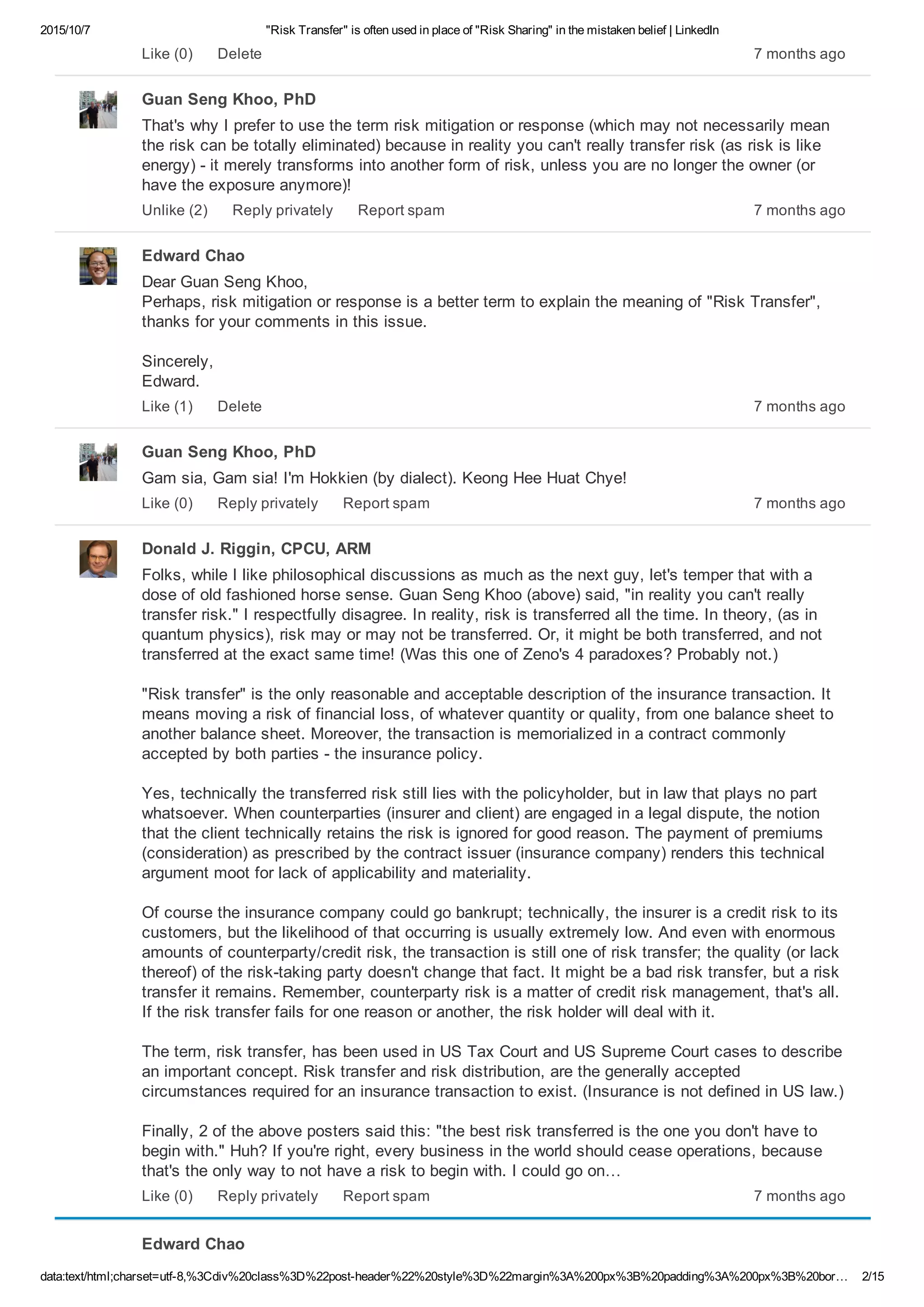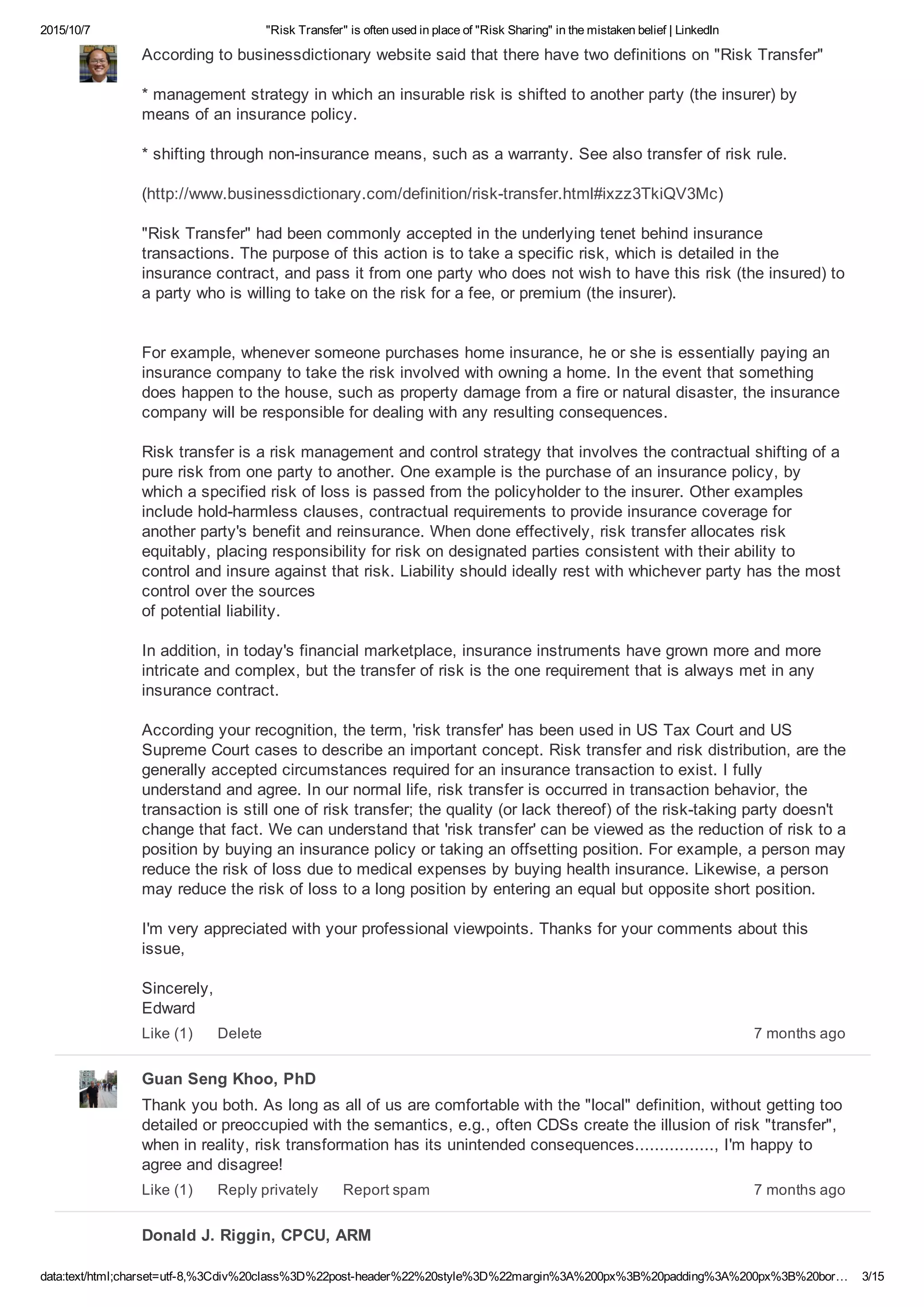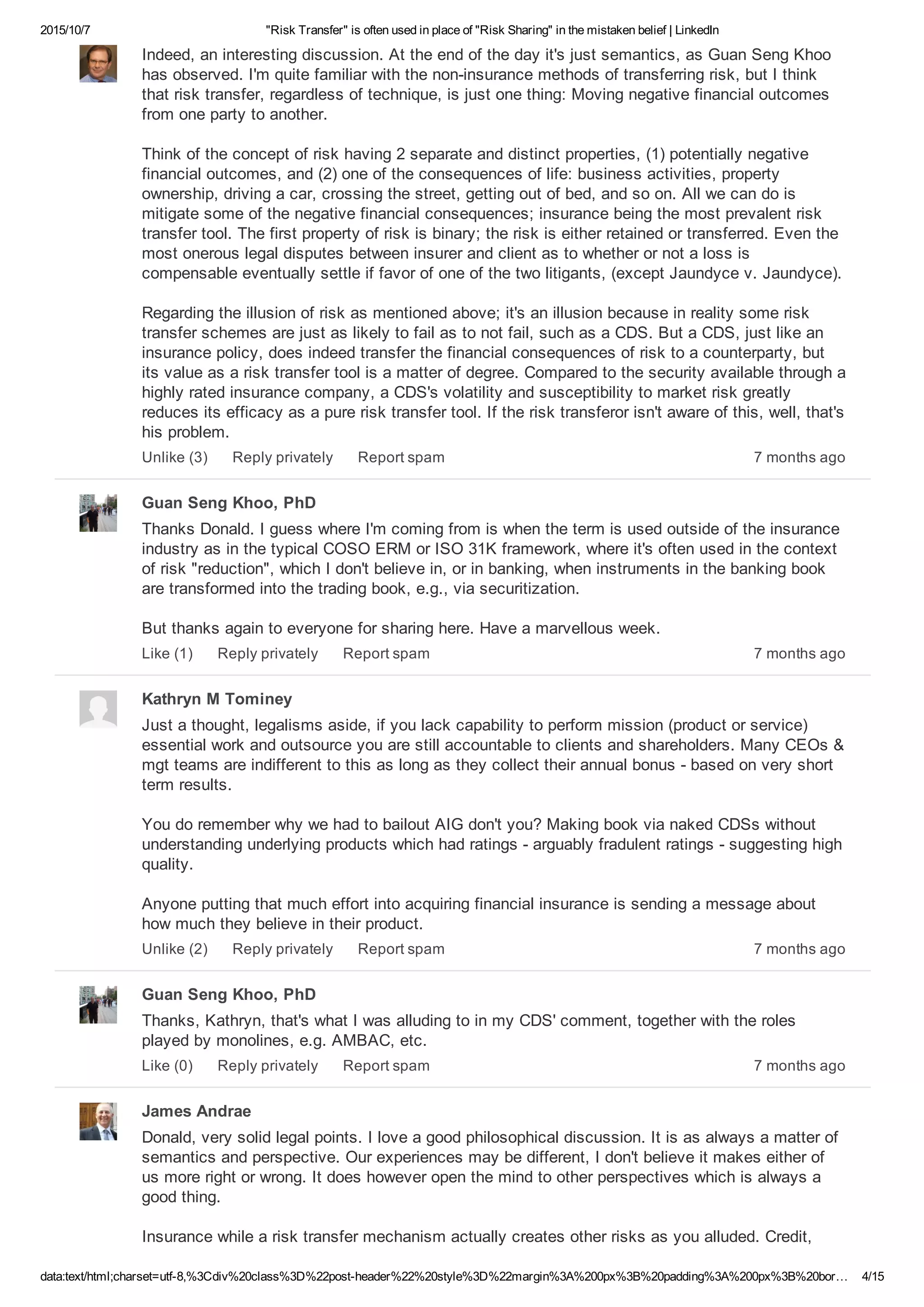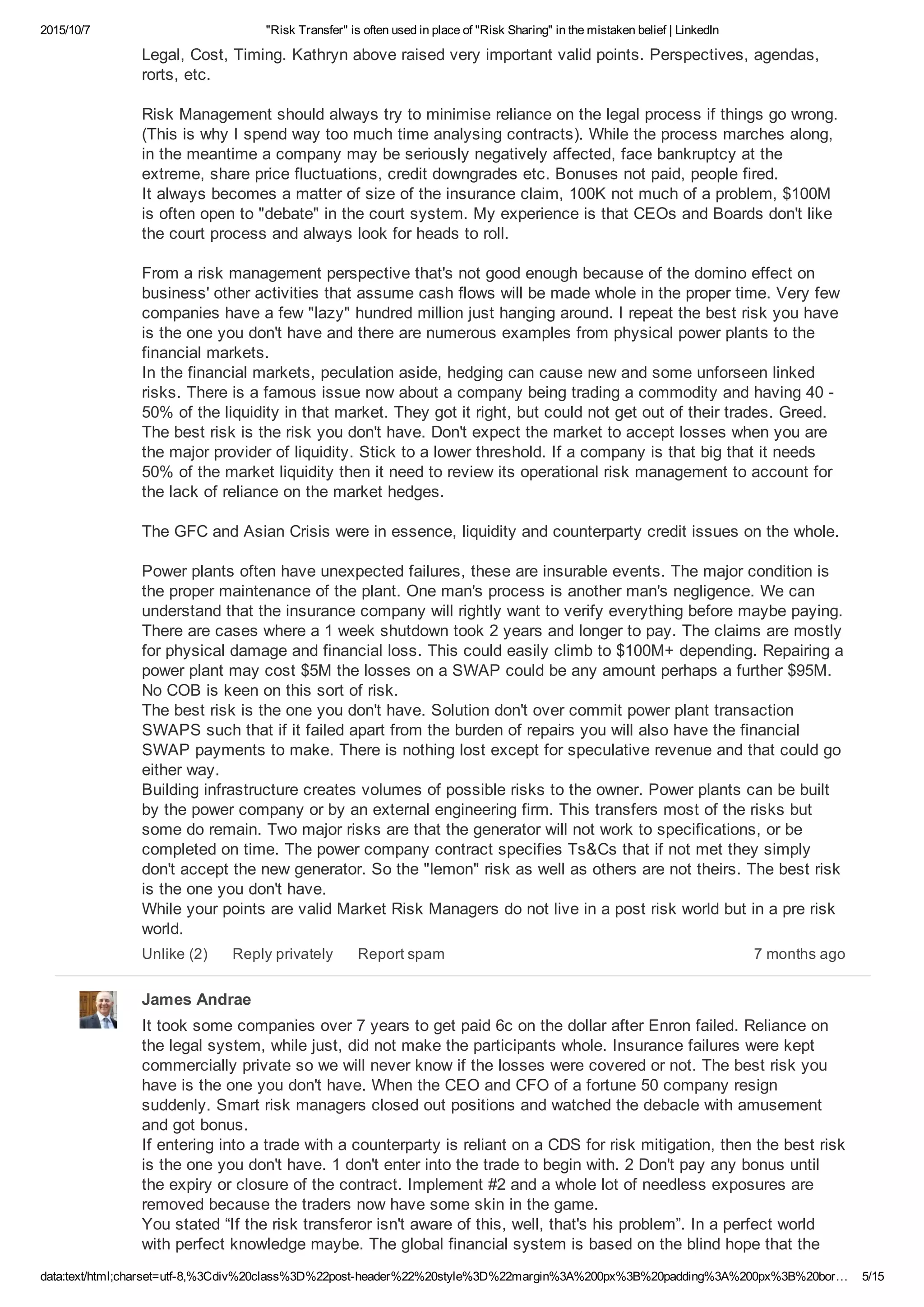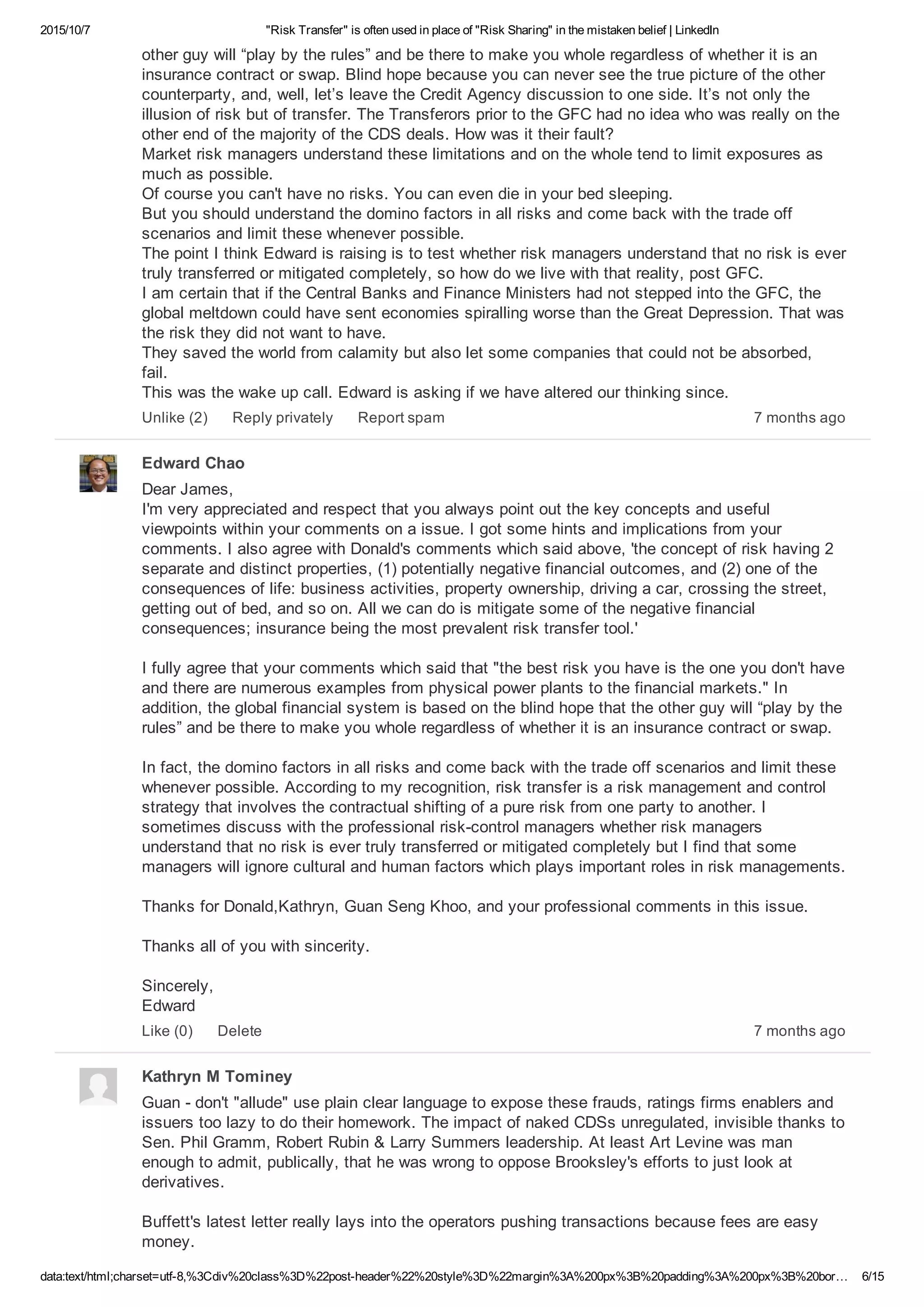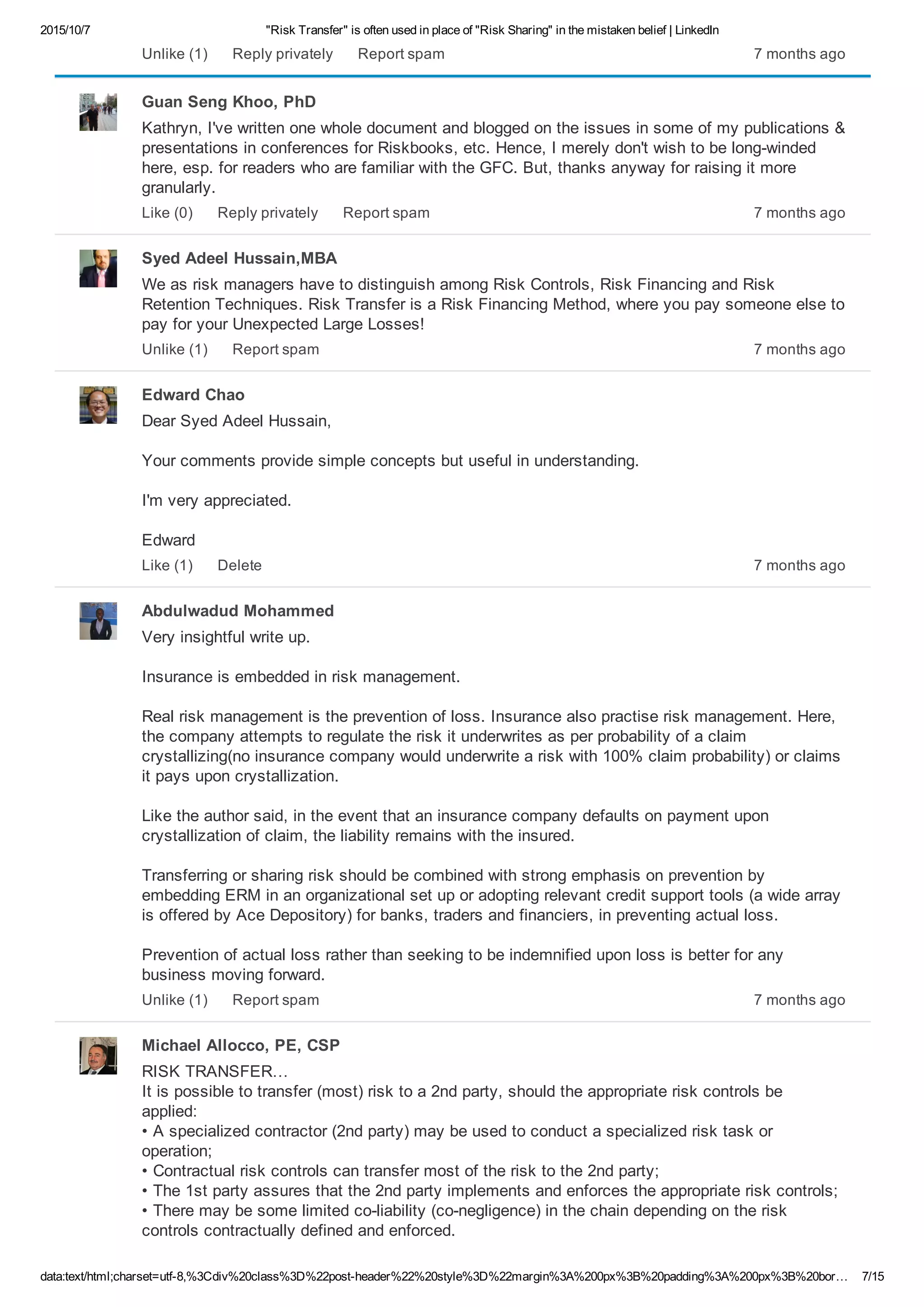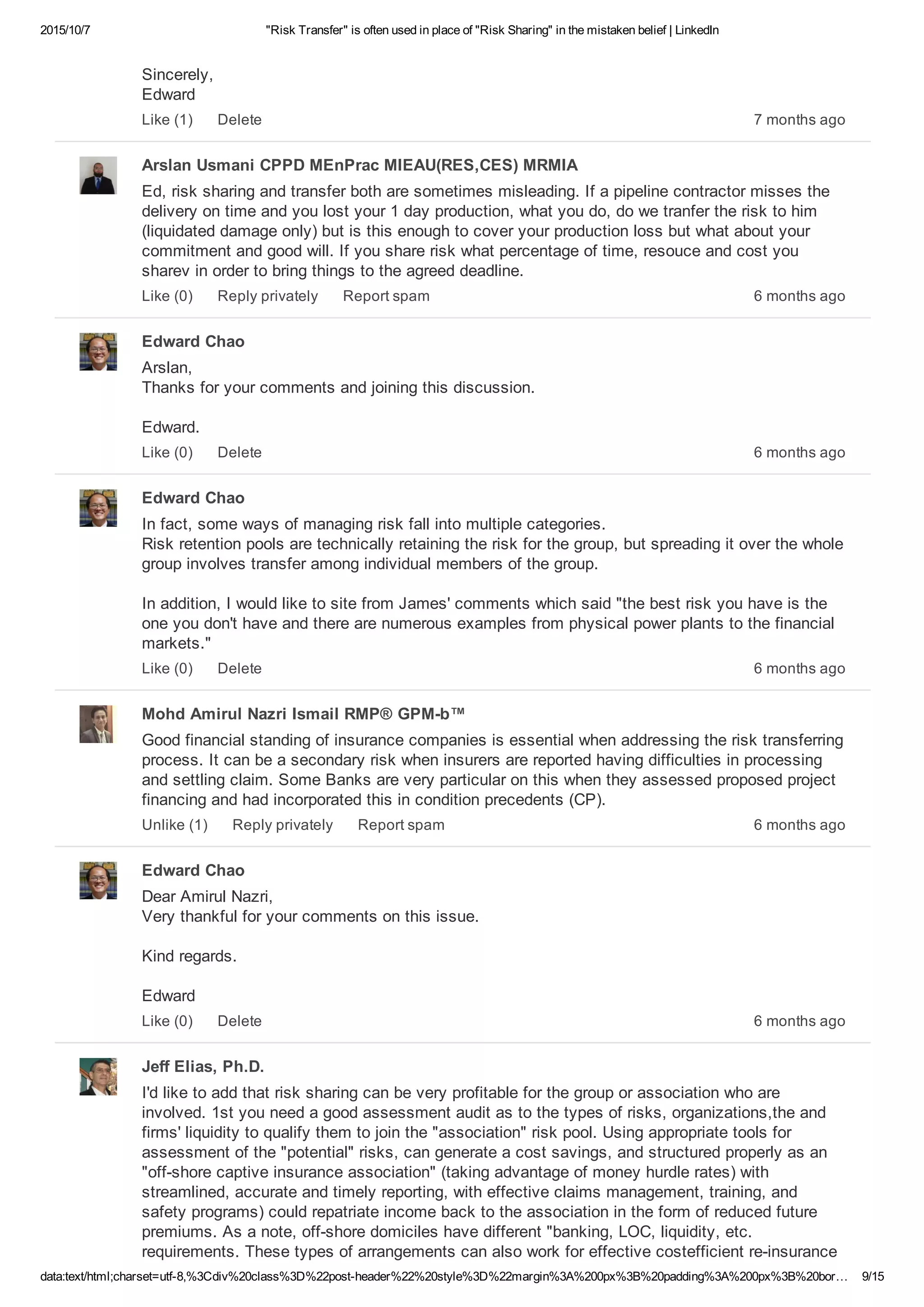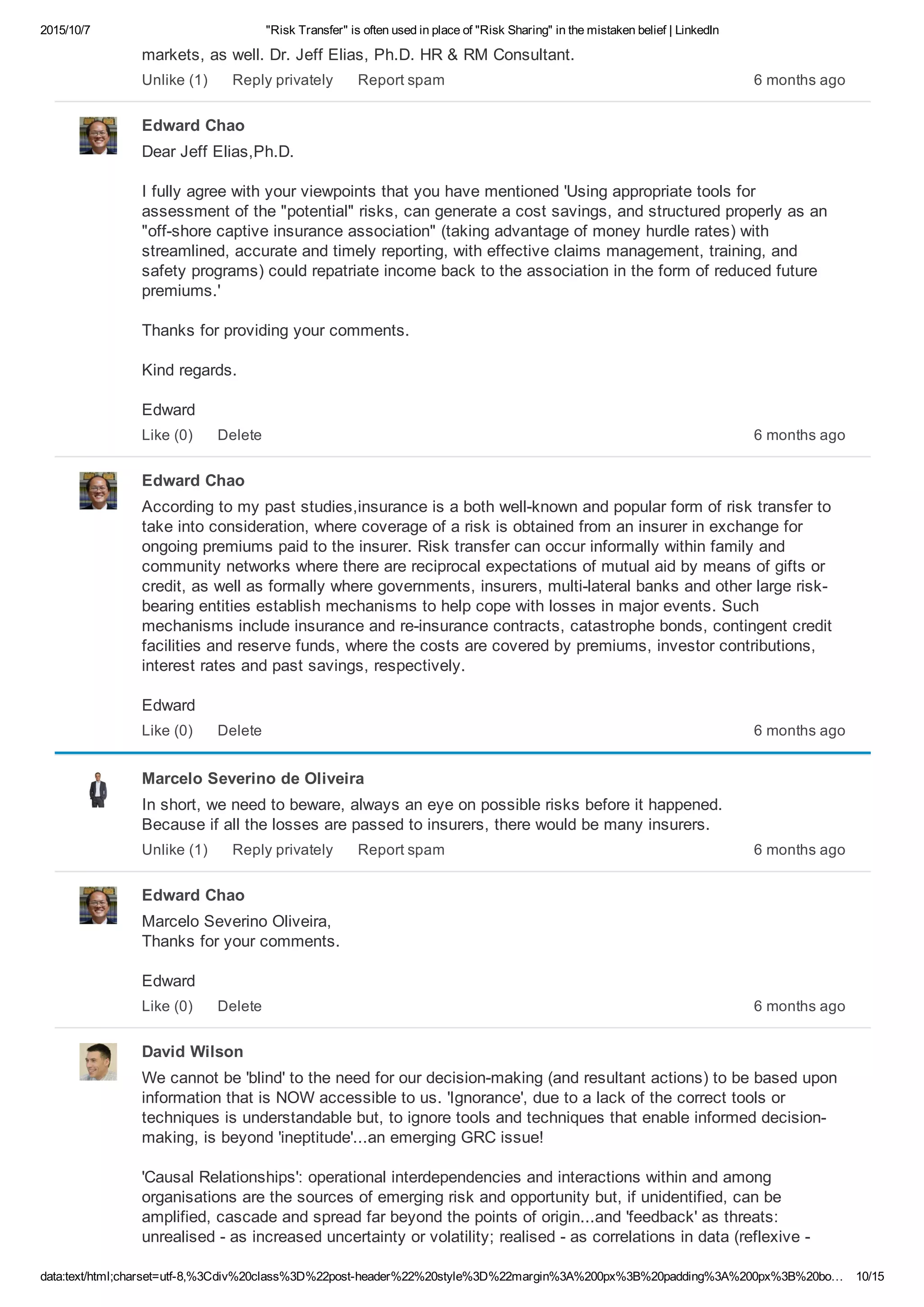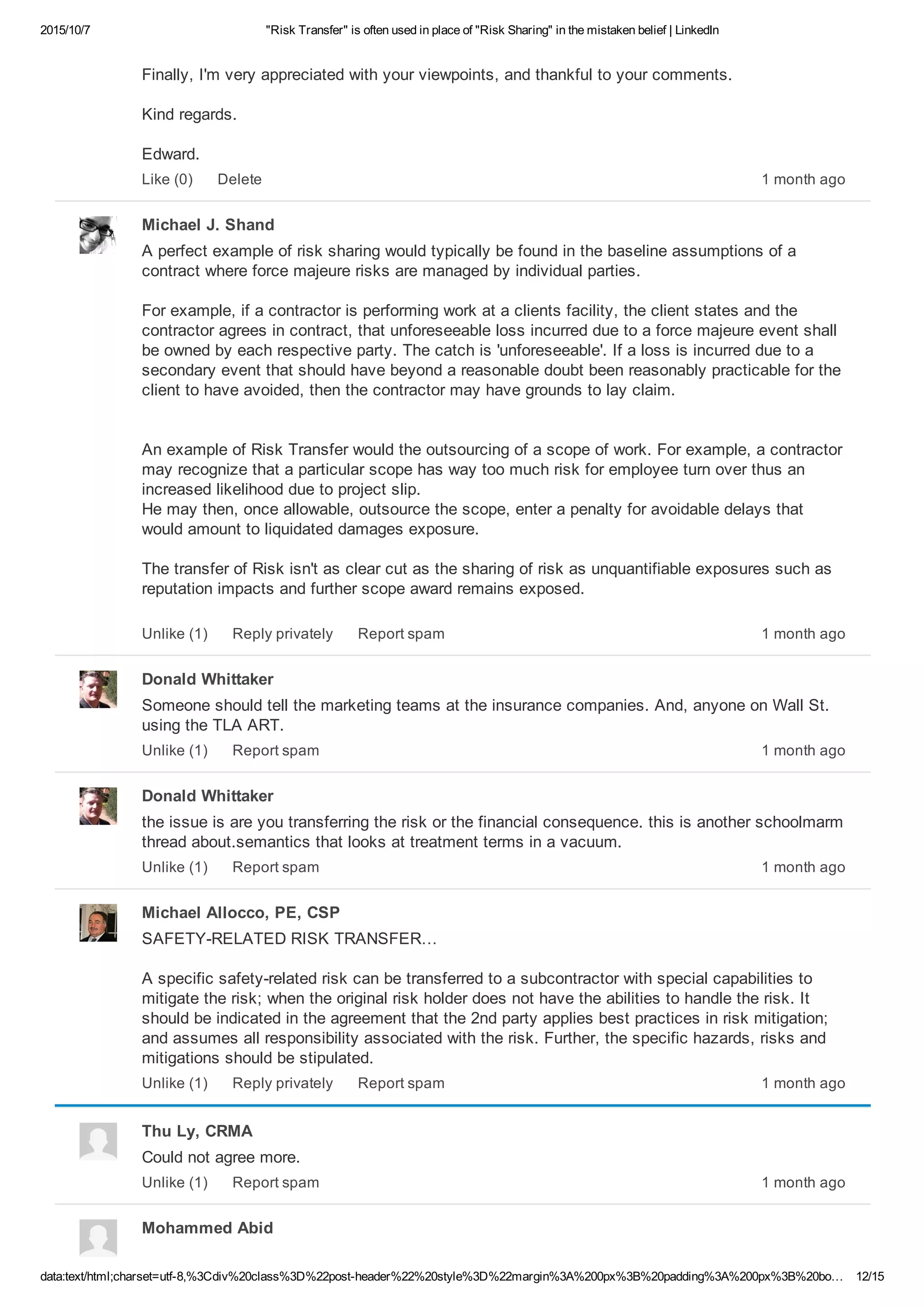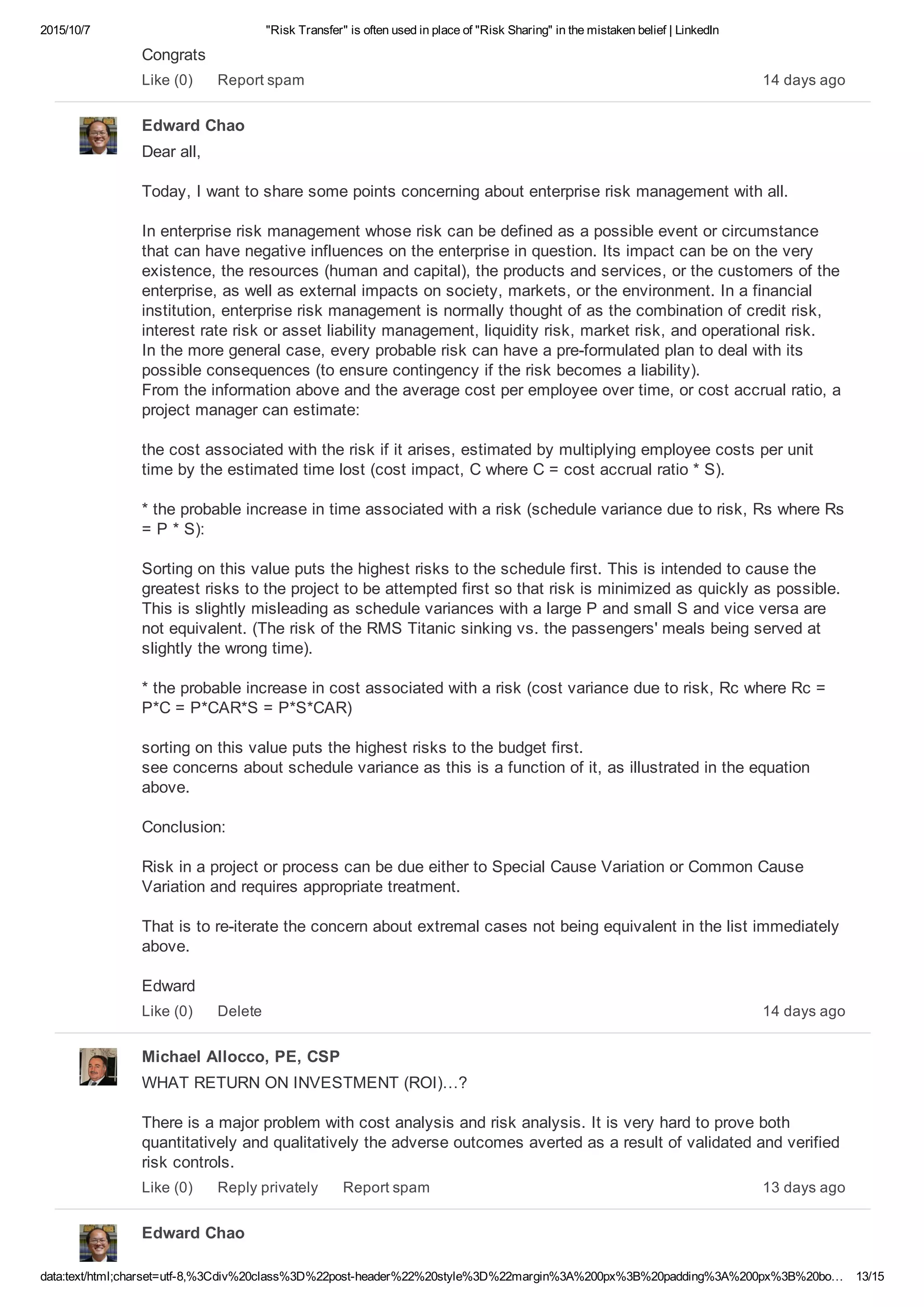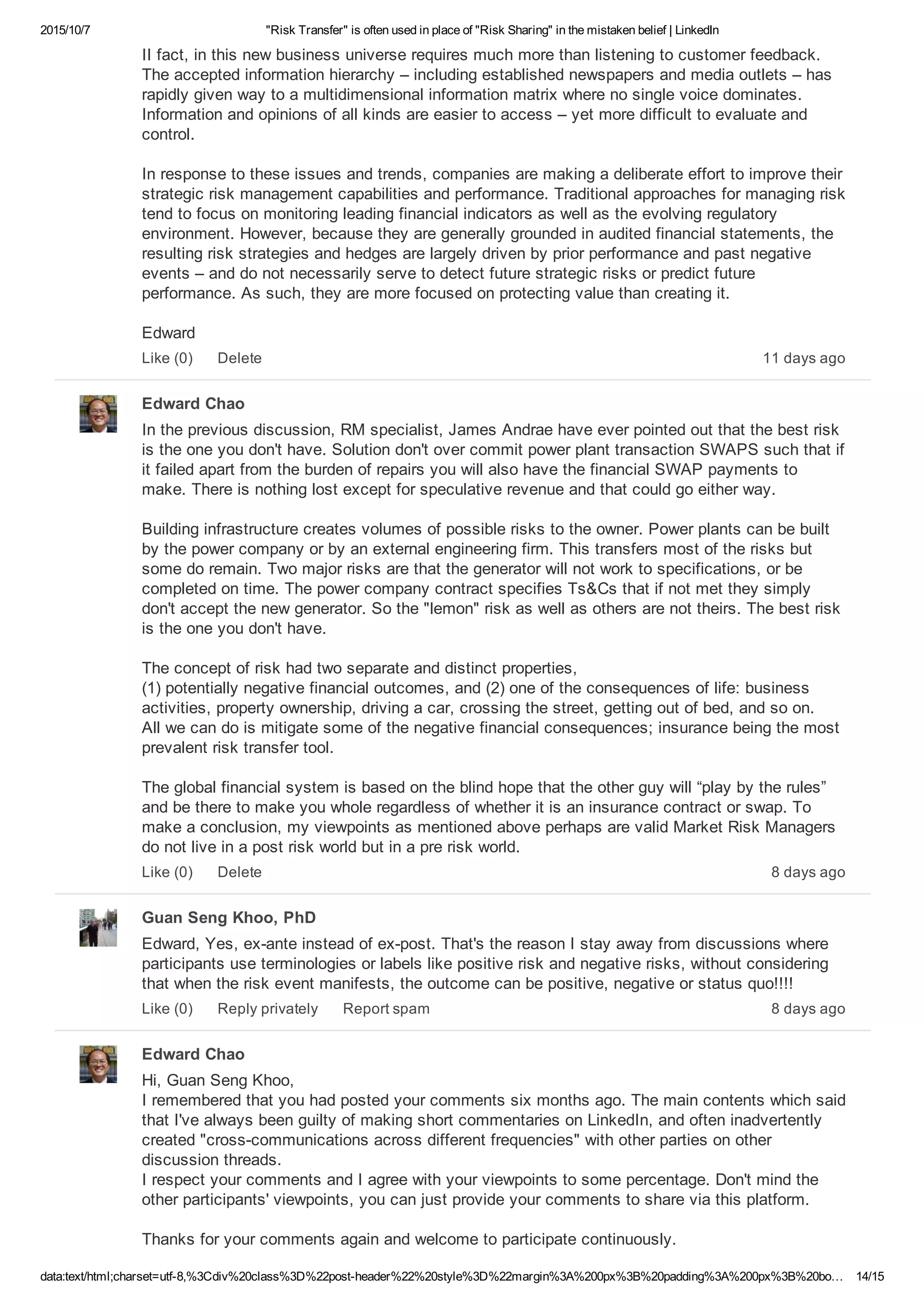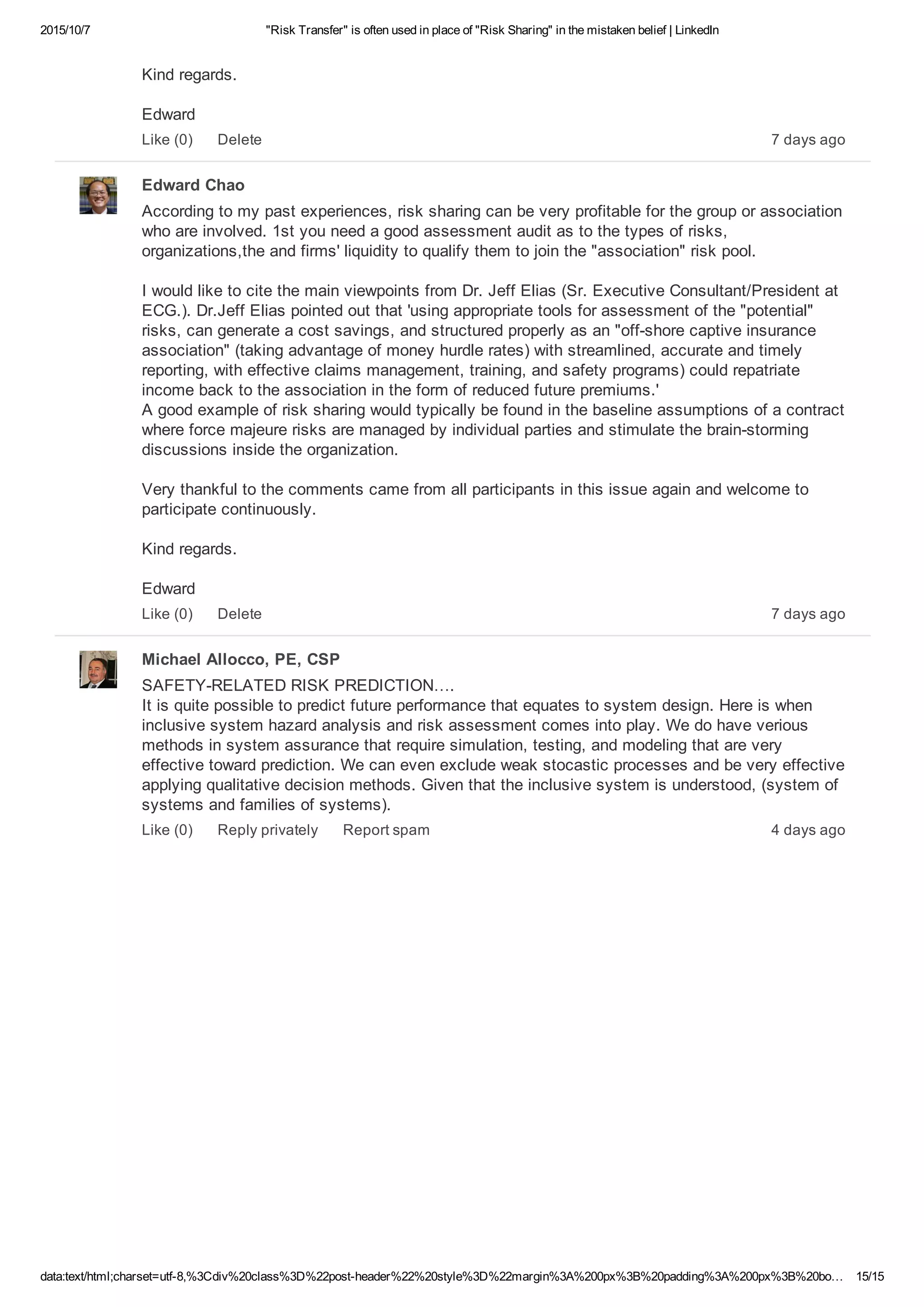The document discusses the terms "risk sharing" and "risk transfer" and clarifies their meanings. It states that "risk sharing" refers to sharing the burden or benefit of a risk with another party and measures to reduce risk. However, "risk transfer" is often mistakenly used to refer to risk sharing. While insurance appears to transfer risk to an insurer, the original policyholder still retains legal responsibility for losses. Therefore, insurance is more accurately described as a post-event compensation mechanism rather than a full transfer of risk. The document also discusses how some risk management strategies involve elements of both risk transfer and risk sharing.

